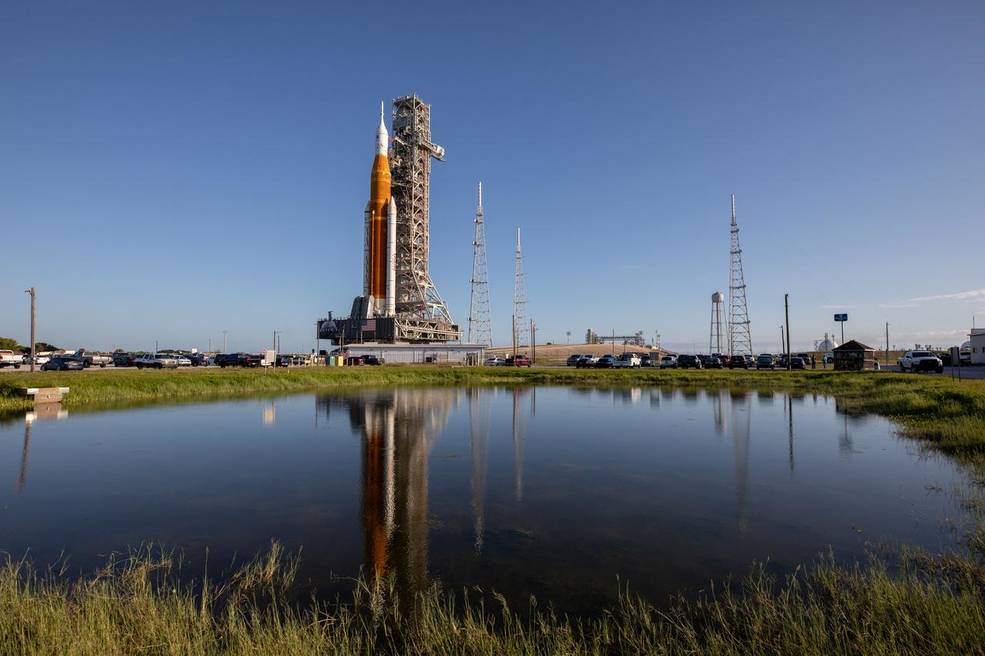NASA’s plans for unmanned and later human launches to the Moon have been given the green light to proceed after its new, but much delayed, heavy-lift launch vehicle, the SLS, passed a fuelling and countdown test during its fourth Wet Dress Rehearsal (WDR).
As with previous tests, not everything went to plan, including a hydrogen leak on a quick-disconnect system on the liquid hydrogen bleed line (used to chill the engines in the core stage before ignition). It was this that prevented the SLS flight computers going below T-29 seconds on the countdown. The leak will be repaired once SLS is back in the Vehicle Assembly Building (VAB).
While the aim of reaching T-9 seconds (the main engine start time) was not reached, the few functions left to be tested such as the removal of umbilical lines had either been tested previously – and thus deemed to be flight worthy – or, like the final gimbal test of the solid rocket boosters, will be tested elsewhere. Either way, NASA has deemed the test successful enough to have retired most of the risk for a launch attempt. Thus, the Artemis 1 launch of the SLS carrying an uncrewed Orion spacecraft around the Moon is now expected to take place either in late August or September.








